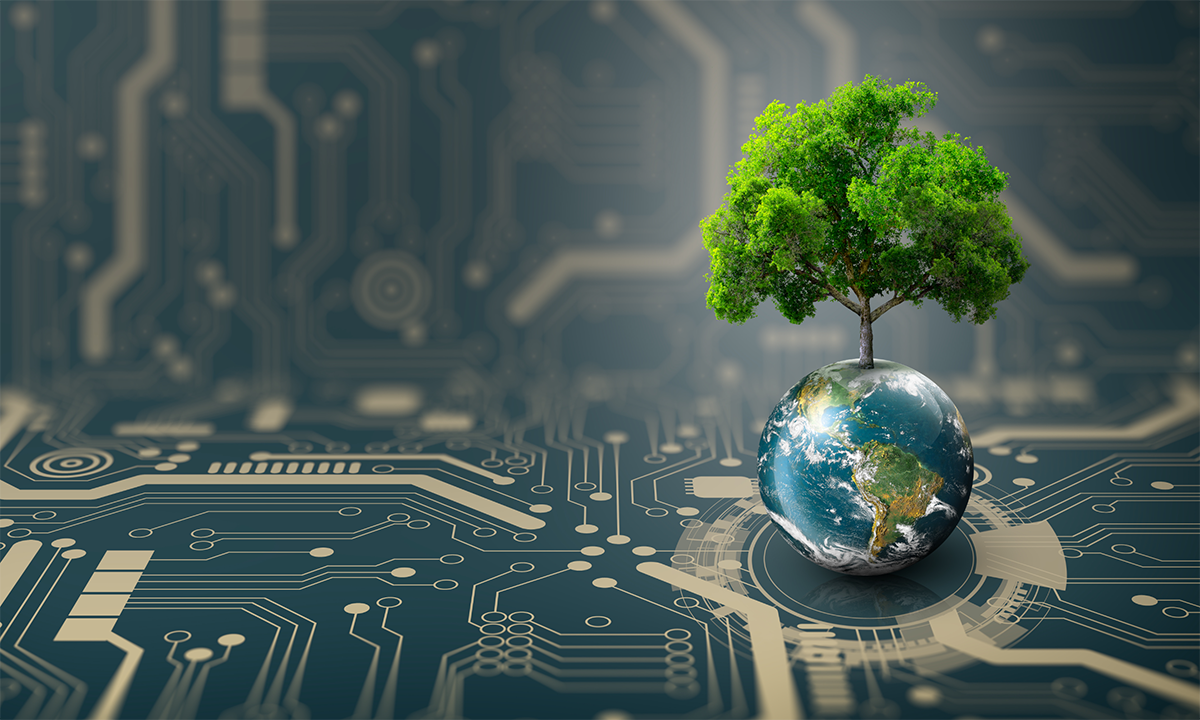We need a Fourth Industrial Revolution that fosters economic growth along with environmental sustainability. Using AI to help stop human trafficking, protect forests from illegal logging, get girls around the world in school – and more.
Our estimates suggest that AI has greatest positive potential for impact on four Sustainable Development Goal 4 and 13 groups: SDG 4 quality education; and SDG 13 climate action. However, these achieved benefits come at the expense of achieving goals 1 and 12 groups: SDG 1 no poverty; and SDG 12 responsible consumption and production.
Increased Energy Efficiency
Energy efficiency – ie lower running costs and associated carbon emissions – improves Artificial Intelligence will run to detect anomalies that can trigger corrective actions before things go really wrong. This is particularly relevant in industrial settings, where it can also have additional benefits. Alerting users can stop over-consumption. AI can also help reduce fossil fuels thanks to the data fed by sensors that optimise heating and cooling according to users’ preferences, occupancy data and live weather reports. But, they should also be aware that AI infrastructure can also be quite energy intensive. Training large language models, for example, is extremely electricity-hungry, which in turns means it contributes to greenhouse emissions. This means that businesses should make sure that their AI solutions can help them advance environmental sustainability and not hinder it – which in some cases means investing in open source, scalable AI technology solutions and energy-saving hardware.
Increased Renewable Energy
AI can help buildings and smart cities optimise energy use to adapt light, heating and air-conditioning to actual needs – saving carbon use as well as money, and helping to match renewable energies with their peak production times. It can also improve the forecasting of supply and demand. Here, too, AI can be used to promote SDGs. For instance, increasingly sophisticated algorithms can be employed for automating the identification of anomalies, such as oil spills, for the monitoring of marine biodiversity – one of the most underfunded SDGs – and SDG 14 targets on life below water. With data centres and AI models powered by fossil fuels, its own carbon footprint might one day be significant, and transparency is another area worth embracing as countries begin to regulate AI.
Improved Weather Forecasting
For example, AI can help make weather predictions more accurate, and inform us of the impact of climate change by detecting greenhouse gases. It also enables early warning systems for natural hazards such as forest fires and earthquakes. Using these sensors to track river and aquifer levels, AI can enhance water management by supporting optimisation of both its distribution and the use of water supplies, preventing shortages, including in access to clean and affordable water – addressing also SDG 6. But the costs of building a lower-carbon AI are huge, and the hardest to tackle is AI’s energy use: its huge data centres need simply gigantic amounts of power; its raw materials often come at a huge environmental cost, such as lithium and tantalum mined in Argentina, Bolivia and Chile, with dispossessions and displacements of indigenous people.
Improved Water Management
In order to achieve goals related to climate change, we need water supply infrastructures that are resilient against and can adapt to extreme weather. AI can reinforce the predictive maintenance and optimise the use of resources in these systems, thereby lowering inefficient spending and energy costs. By using DeepMind AI to forecast cooling needs inside Google’s data centres (which need about as much cooling as a nuclear power station), the energy usage of data centres is reduced by 40 per cent, with this fewer fossil-fuelled power plants being needed and thus fewer carbon emissions taking place. And AI can make an extraordinary contribution to the so-called Environment SDGs (Zero Hunger, Goal 2; Life Below Water, Goal 14; Life on Land, Goal 15) – but only if used responsibly. That is, solutions should be reverse-engineered first to ensure they are applied in an ethical manner.
Reduced Carbon Emissions
AI might be crucial to more swiftly reach the SDGs, and eventually could improve climate-change solutions. Like all technologies, however, it might not always be used responsibly. AI models require powerful computers to train and run them, and the energy required to train toys or models goes up as their compute capacity goes up. Additionally, AI often requires rare minerals mined in tightly controlled conditions that often harm local communities when the extraction happens. The data generated by AI algorithms is extensive and requires the use of energy-guzzling data centres, where the carbon emissions are considerable – yet new studies are identifying ways of saving carbon emissions through AI techniques, thereby improving digital sustainability.

